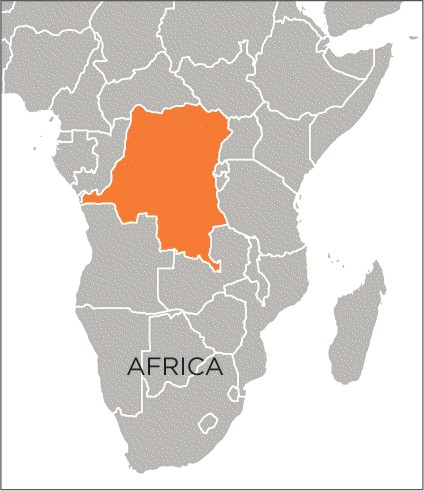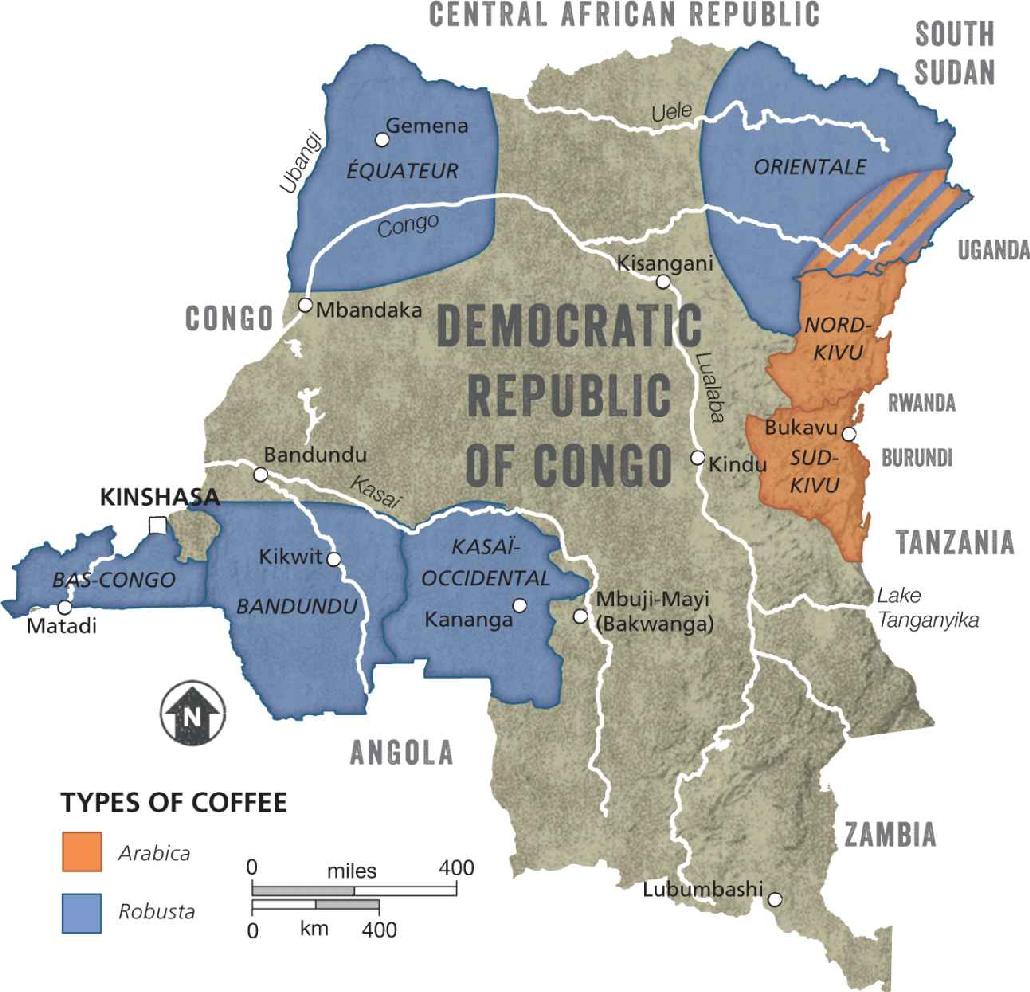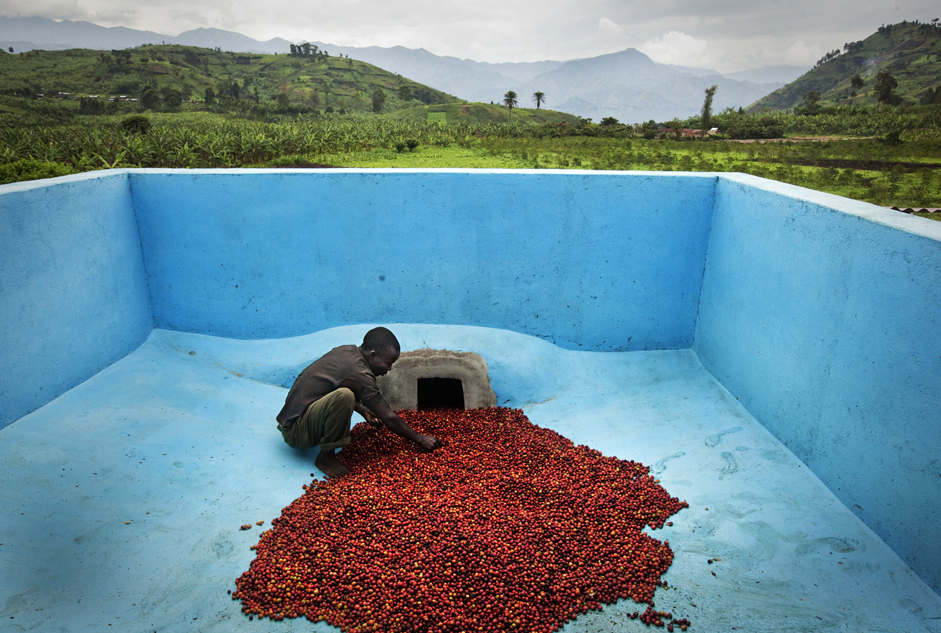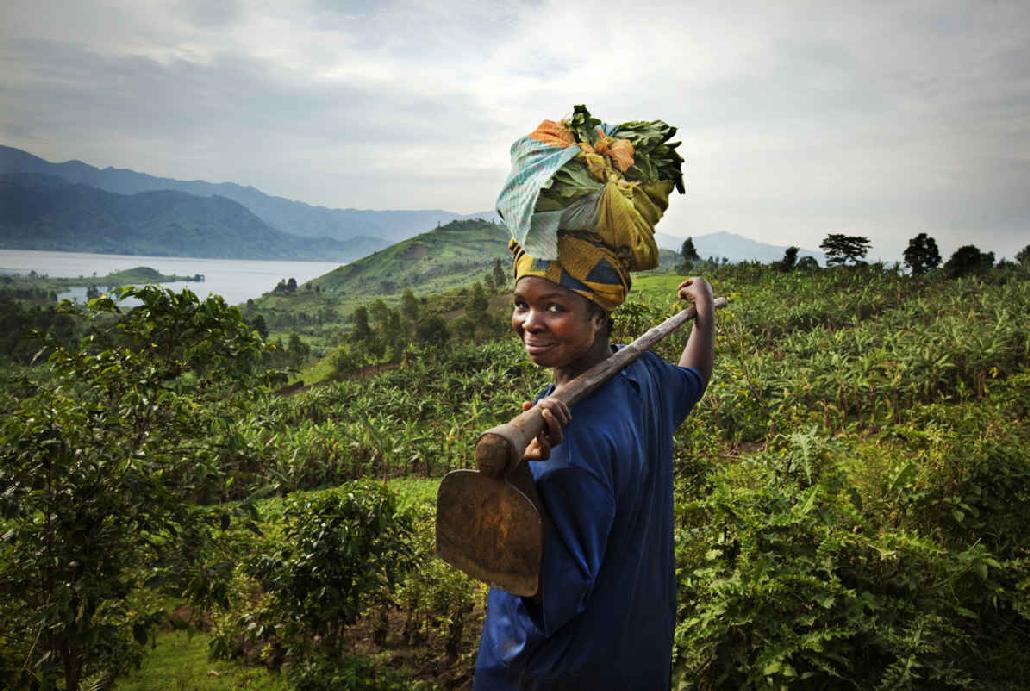Coffee was introduced to the Democratic Republic of the Congo (DRC) in 1881 from Liberia, but it wasn’t until Belgian colonists discovered a new variety growing there in 1898 that agricultural production began. Despite its tumultuous history, the DRC is now considered an up-and-coming producer of speciality coffees. Many have high hopes for its potential in the future, but significant challenges have yet to be faced.

The plant discovered in Belgian Congo in 1898 was a variety of Coffea canephora, which the colonists named ‘Robusta’ to promote its hardy nature. Coffee production started to gain momentum on plantations under the brutal rule of the Belgian colonists. The vast majority of coffee was produced on these estates, rather than by smallholders, until independence in 1960. Until this point, agriculture, including coffee production, was well funded and supported, with 26 research stations in the country and 300 professionals working inside the Institut National pour l’Etude Agronomique du Congo Belge (the national institute for agricultural studies in the Belgian Congo).
After independence in 1960, government funding was reduced and in the 1970s the plantations began to decline, in part due to the marginalization of non-nationals and in part due to a lack of infrastructure. By 1987, only 14 per cent of the coffee produced in the DRC came from estates, and by 1996 only two per cent. However, coffee production had boomed in the 1970s and 1980s as a result of the free market, and the government had tried to sustain the industry in the late 1980s by reducing tariffs on exports.

The 1990s was a brutal decade for the country and the coffee sector. The First and Second Congo Wars, spanning the period from 1996 to 2003, triggered a decline in production, which was further exacerbated by the spread of coffee wilt disease. The high production levels of the late 1980s and early 1990s dropped to less than half. Coffee wilt primarily affected only Robusta production, but this made up the vast majority of the coffee produced in the DRC.
Infrastructure in the country still poses a huge challenge. There are hopes that coffee can be a part of the economic revival of the DRC, as it struggles to move past the recent violence. Both the government and outside NGOs (non-governmental organizations) have invested heavily in the sector and there is increasing interest in the country’s potential for excellent coffee. The soil, altitude and climate of parts of the DRC lend themselves to the production of truly exceptional coffees, and they are worth seeking out and supporting.
 A man washes ripe coffee beans in Kivu. Coffee from the DRC disappeared from the international coffee market for many years, but attempts to revitalize production are underway.
A man washes ripe coffee beans in Kivu. Coffee from the DRC disappeared from the international coffee market for many years, but attempts to revitalize production are underway.
TRACEABILITY
Almost all coffee in the DRC is produced by groups of smallholders or cooperatives. It is extremely unlikely that you will find a single estate, and less likely still that they will produce excellent coffee.
 Sacks of Congolese coffee being prepared for export in 1911. At the time, the country was under Belgian colonial rule.
Sacks of Congolese coffee being prepared for export in 1911. At the time, the country was under Belgian colonial rule.
TASTE PROFILE
The very best coffees from the DRC have a delightful fruitiness, are sweet and can be pleasingly full-bodied.
GROWING REGIONS
Population: 82,243,000
Number of 60kg (132lb) bags in 2016: 335,000
Some regions of the DRC mostly grow Robusta, others mostly grow Arabica, and some grow a mixture of the two.
KIVU
Kivu comprises three provinces:
Nord-Kivu, Sud-Kivu and Maniema, all surrounding Lake Kivu, after which the region is named. The higher altitude areas in Kivu grow the best coffee in the country, mainly Arabica, so these are worth seeking out.
| Altitude: | 1,460–2,000m (4,800–6,560ft) |
| Harvest: | October–September |
| Varieties: | Mostly Bourbon |
ORIENTAL
A small amount of Arabica is also grown in this eastern region of the country, but it is mostly Robusta here.
| Altitude: | 1,400–2,200m (4,600–7,200ft) |
| Harvest: | October–September |
| Varieties: | Robusta and Bourbon |
KONGO CENTRAL
Formerly Bas-Congo, this very westernmost point of the country does produce some coffee, but it is all Robusta.
| Harvest: | March–June |
| Varieties: | Robusta |
EQUATEUR
This is another large producing area in the country, situated in the northwest. It is mostly Robusta here.
| Harvest: | October–January |
| Varieties: | Robusta |
 A woman on her way to work in a coffee plantation near Kivu Lake. Arabica from the Highlands of Kivu was once renowned as some of the best in the world.
A woman on her way to work in a coffee plantation near Kivu Lake. Arabica from the Highlands of Kivu was once renowned as some of the best in the world.